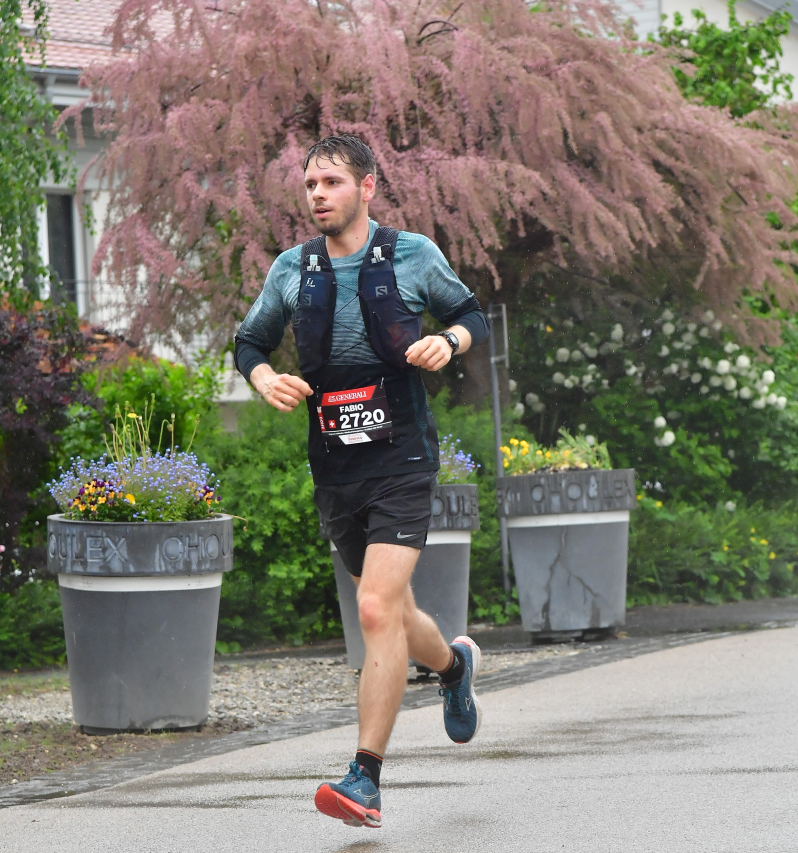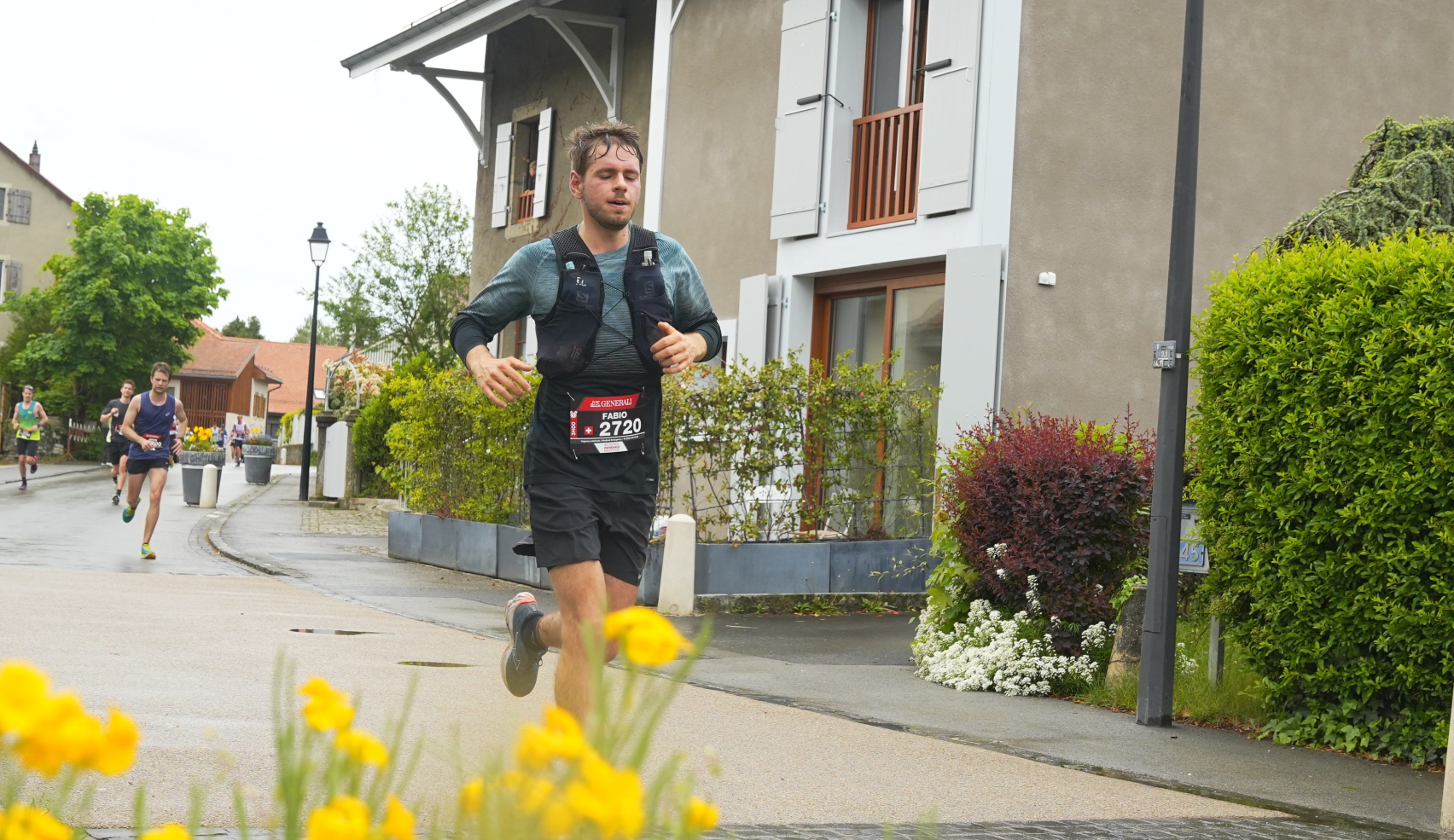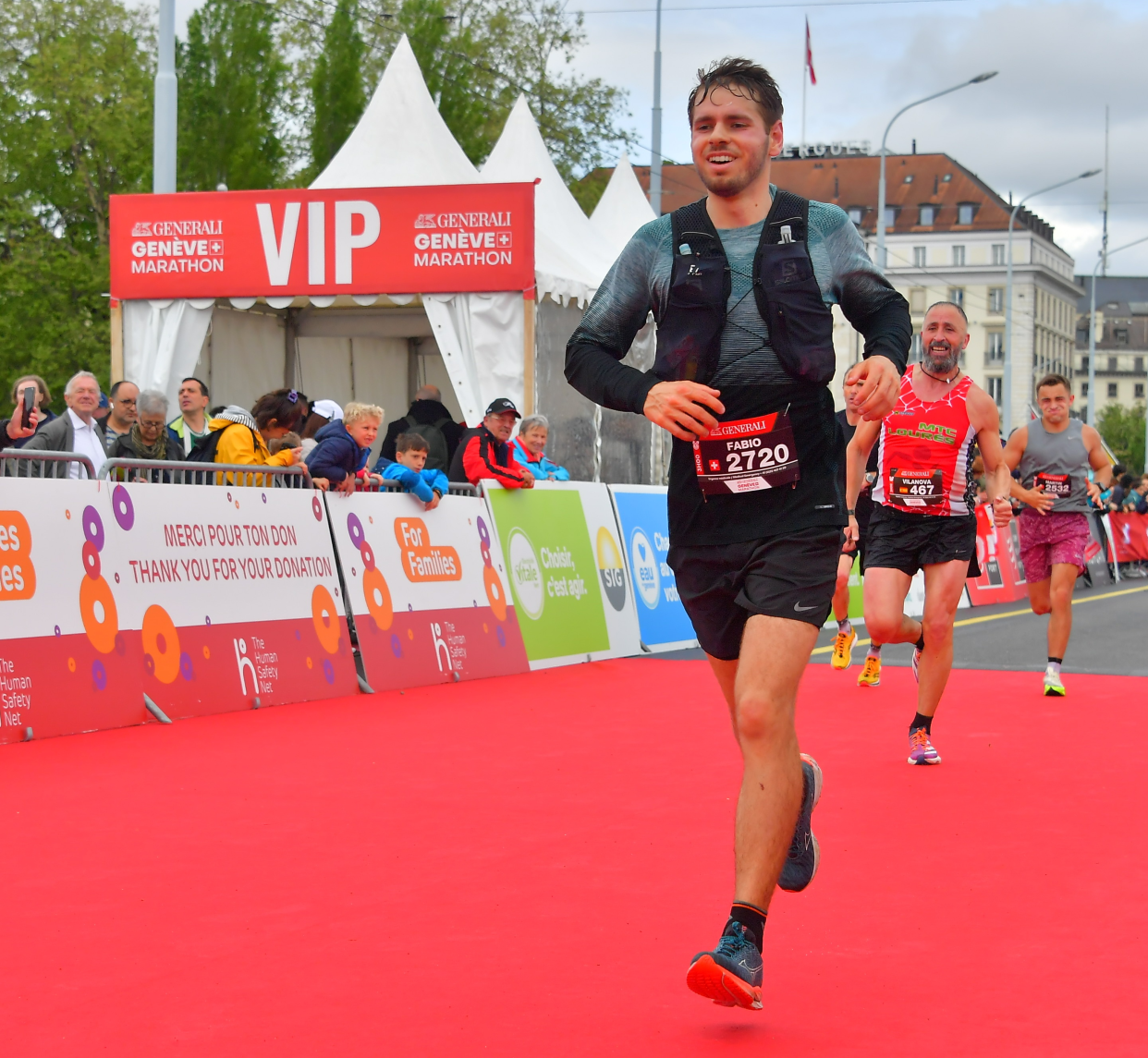Geneva Marathon
For more than five years I have been casually running longer distances. I enjoy being left alone with my thoughts and getting the opportunity to reflect on important decisions in life. Recently, I have also participated in two marathons: the Lausanne marathon which I completed in 2022 in a time of 3:22.32,8, and the following year slightly faster in a time of 3:06.27,8. The trend is evident. It is time to push the time below 3 hours; and not just slightly.
In order not to spend the whole autumn collecting miles on the road and missing a large part of the trail-running season, I wanted to get this year’s marathon done before the summer. Hence, why in January I signed up for the Geneva Marathon in early May, and simultaneously started my training.
Preparation
I was not super meticulous about my training. On average, I did around one high-intensity interval training and one longer run per week. Unfortunately, I quite quickly got myself a quadriceps injury from too much cycling, ski-touring, and uphill interval training, which restricted me to running on the flat.
Two weeks before the marathon, I did my final work-out: a 35km run at a 4min/km pace, which would land me at a marathon time of 2:50. It also served me to test my fueling strategy, which worked out perfectly. For this marathon I decided to wear a running-backpack equiped with two 0.5l flasks filled with water, such that I would not have to awkwardly gulp down cups of water at each refueling station. To me, the advantages of a proper hydration vastly outweigh the burden of carrying the extra weight.
Four days ahead of the race, I started increasing my intake of carbohydrates in my diet. Porridge and pasta were my main source of nutrients.
The race

Race day featured some pretty bad weather. Right when I arrived in Geneva, the rain started. And unfortunately, it was not just some nice spring shower.
Before going to the starting line, I was planning to do my usual warm-up routine. However, due to the bad weather, I constrained myself to a shorter program than usual, carried out in the shelter of some trees in a nearby park.
Only minutes later, I started queueing up behind the starting line, just in front of the 3h pace-maker, and moments later, the race was on. The first few kilometers lead us along some flat streets to a collection of fields and forests just outside of the city. I felt great. Despite the pouring rain, I could hold the targetted pace easily and entered the flow-state rather quickly.
Around the 10th kilometer, I was surprised by two long descents. I could make some good tempo, but my knees suffered from the hard impacts. The course looped back to Chêne-Bourg, and it was great to see many people cheer at the side of the streets despite the bad weather.
 Passing through the streets of Chêne-Bourg
Passing through the streets of Chêne-Bourg
As I passed through the semi-marathon mark with a time of 1:26:48, the course again started going northward towards the beautiful fields. Here is where my condition was strongly deteriorating. I started feeling weak and a sharp pain in my right knee was setting on. I was very familiar with the pain: a classic inflammation of the IT-band as I have experienced several times before. Shortly afterwards, Baptiste, a running coach from the EPFL/Unil running group caught up with me. We shared a few laughs, but in my state I could no longer keep up with his pace.
 Moments before completing the half-marathon
Moments before completing the half-marathon
From here on, the big suffering started. I had to significantly drop the pace. In my head, thoughts of dropping the race altogether were swirling aronud. Why should I keep pushing and risk getting a bigger injury when I could just stop right here? Despite big efforts to think positively, I could not suppress the evil thoughts which told me to abandon the race on the spot. I settled my internal debate with the resolution that I would stop as soon as the 3h pace-maker takes over, and I would have no hope to land a sub-3-hour marathon time any longer.
At around 30km followed a long descent all the way down to the lake. I started feeling a bit more energized and was happy to have made quite a bit of progress with little effort. Having arrived at the lake, I could see the part of the city where the finish line was in the far distance. Here, I started to get a bit confused. People at the side of the street were suddenly shouting “Go sub-3 runners” in French. But how would they know what pace we are going at? My worst suspicion turned out to be a reality: the 3-hours pace-maker was right behind me. With the resolution to keep pushing ahead of the pace-maker for as long as I can, I swallowed my last energy gel and mentally prepared for the immeasurable suffering which would await me on the last kilometers. With heavy breathing and pain in my whole body, I somehow managed to keep up with the pace. Finally, at 40km the pace-maker dropped out of the race, and I, realizing how close I am to the finish line, started to push the pace up a bit to ensure I would not narrowly miss out on a time below 3h. The final stretch felt eternaly long, but was in the end rewarded with a time of 02:58.58,3.
 Crossing the finish line
Crossing the finish line
Right when I stopped running, I started realizing that the pain in my knee was quite severe. I was at the end of my forces and barely able to walk any more.
Debriefing
So what was the issue? As for my final time, I partially have to blame the hilly course for my inability to keep up with the pace I was quite comfortably able to hold during my flat training runs. The rain may have had a small impact on my performance, since my shoes were soaking wet from the first meters on, but certainly would not have slowed my pace by this much.
The bigger problem was the knee. My IT-band was properly injured and I was unable to run for exactly a month, after which I carefully restarted running and never had any issues again. I suspect that two factors have caused the injury: first, the hurried warm-up before the race, and second, the lack of downhill-oriented training during my preparations. Concerning the latter, I realized in hindsight that by cutting out all uphill interval trainings and doing ski-touring, I never really trained my downhill running. Hence, my knee stability must have deteriorated, which in turn causes imbalances that lead to injuries.